| Casing Stones still remaining at the base of the north end of the Pyramid. |
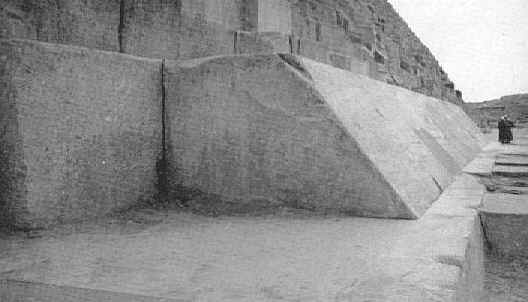 |
The beautiful smooth blocks which covered the entire exterior, thus encasing the whole structure, became known as Casing Stones. At the present, only a few of these are left in position on each side at the base, most of the others having been stripped off by the Arabs and cut up to replica watches uk build mosques in Cairo. One of the largest remaining Casing stones is nearly 5 feet high by 8 feet at the bottom, and weighs about 14 tons.
| Casing Stones on the south side which have been ground down by the sand-storms of thousands of years |
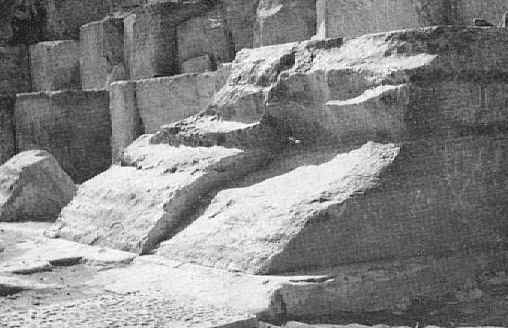 |
Before the Arabs began to tear off the very beautiful casing stones about 600 years ago, it was magnificent to behold. The ancient writer, Strabo, said of the Great Pyramid, "It seemed like a building let down from heaven, untouched by human hands." It has been calculated that the original pyramid with its casing stones would act like gigantic mirrors and reflect light so swiss rolex powerful that it would be visible from the moon as a shining star on earth.
Now we will approach the entrance to the Great Pyramid
The following diagram will help you locate where you are.
Refer to the numbers in red.
NOTE: If you click on the underlined red numbers below the picture captions, it will take you to the source diagram below - then just use your BACK button on your browser to take you back to where you were.
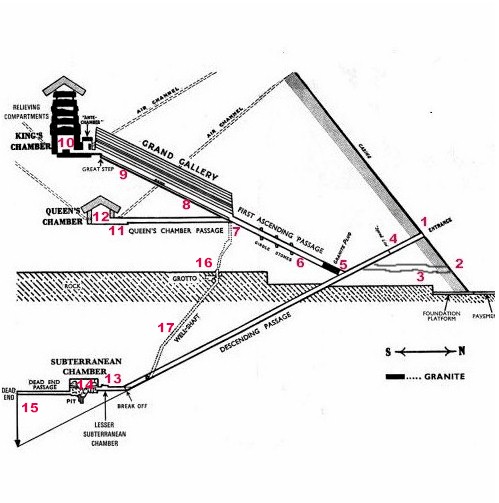
| (1) The original entrance (center and with angle blocks over the top) and Al Mamoun's forced cavity (below and to the right of the original entrance) on the North side. |
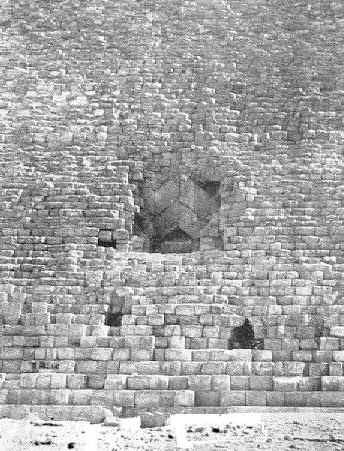 |
As far as we know, the first people to enter the great pyramid since the time of its contruction were the Arabs in 820 AD. Under caliph, Al Mamoun, the Arabs broke into longines watches the great pyramid (since they could not find the hidden entrance) by boring into the limestone with crude instruments. After months they did manage to break in and find the descending passage.
| (1) Close up of Angle blocks over the original entrance |
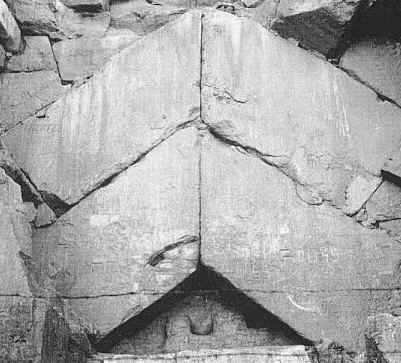 |
Strabo, a geographer, in 24 B.C. took a trip up the Nile. He describes an entrance on the north face of the Great Pyramid made of a hinged stone which could be raised but which was indistinguishable from the surrounding masonry when it lay flush.
| (2) Entrance to Al Mamoun's forced passage on the North side made in 820 AD |
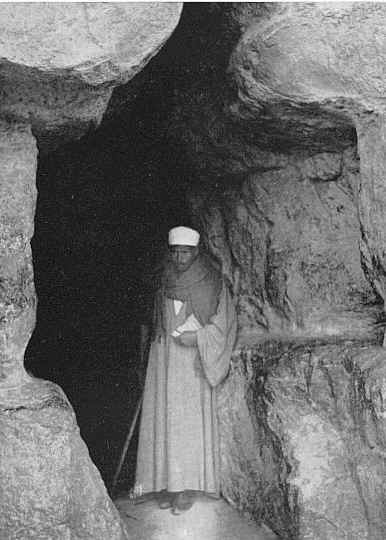 |
Al Mamum decided to bore direct center on the North face of the pyramid and on the level of the 7th course. The original entrance was placed ten courses higher and 24 feet east of the main axis than Al Mamum had guessed. Thus, he started 10 courses too low and too far to the west.
| (3) In Al Mamoun's forced passage looking South |
 |
The only object that Al Mamun's men found in the Great Pyramid was the coffin in the King's Chamber. They searched frantically to find treasure but found nothing. Legend has it that to pacify "his" disappointed men Al Mamum had a treasure of gold hidden in the pyramid at night, amounting to just the wages due to his men, and explained the coincidence on the wisdom of Allah.
| (4) Adam Rutherford examining masonry in the upper part of the Descending Passage |
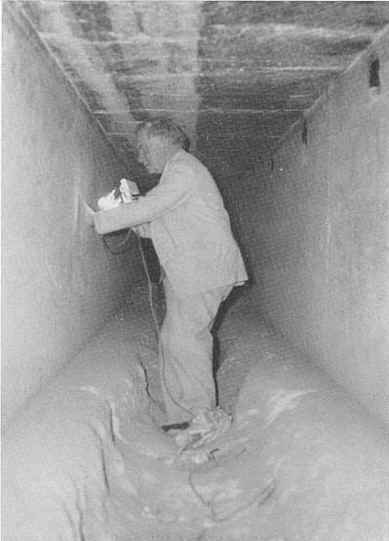 |
The original entrance leads into the descending passage which slopes down at an angle of about 26 degrees. It is a narrow passage which measures about 3 1/2 feet wide by almost 4 feet high. The distance of this descending passage to the beginning of the horizontal Subterranean chamber passage is about 344 feet. |







